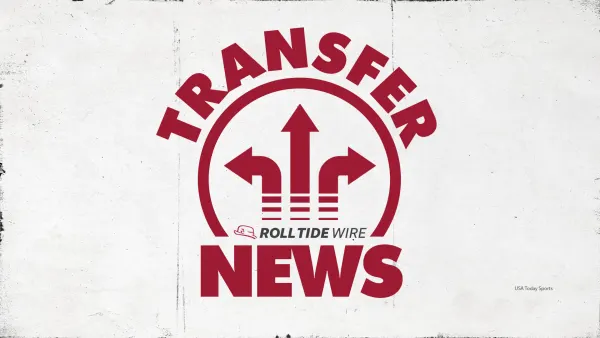The Alabama Crimson Tide baseball program recently faced a significant setback as one of its most promising freshman players entered the NCAA transfer portal. This development marks a major moment for the team, which has been steadily building momentum under the leadership of head coach Brad Bohannon. The loss of a top freshman not only affects the roster composition but also poses broader questions about the program’s trajectory, recruiting strategy, and player development moving forward.
For any collegiate program, the arrival of talented freshmen signals hope and the future. Freshmen who come in and immediately contribute are invaluable—they represent the next generation of athletes who can maintain, if not elevate, a program’s competitive standing. When such a player decides to transfer after just one season, it leaves a tangible gap and sends ripples through the coaching staff and fanbase alike.
The player in question had entered Alabama with high expectations, both from the coaching staff and fans who follow the team closely. His skill set was widely touted, and his recruitment was seen as a coup for the Crimson Tide amid fierce competition from other Power Five programs. Alabama’s baseball program has been eager to reestablish itself as a perennial powerhouse in the Southeastern Conference (SEC), which is widely regarded as the toughest conference in college baseball. Retaining top talent is crucial to that mission.
From a statistical standpoint, the freshman had shown flashes of brilliance throughout the season. Although it’s common for young players to face an adjustment period when transitioning from high school or junior college to Division I baseball, his overall performance indicated a player with significant upside. Whether it was his batting average, on-base percentage, or defensive versatility, the freshman’s presence was a positive factor in Alabama’s lineup.
Unfortunately, the transition period can also be a time of uncertainty and adjustment for young athletes. The challenges of balancing academics, athletics, and personal life at a major university often weigh heavily on freshmen. Compounding that, the competitive environment of the SEC means every player is constantly battling for playing time. It’s not uncommon for even highly talented players to find themselves limited in opportunities as coaches lean on veterans with proven track records in pressure situations.
This can be a tough pill to swallow for ambitious freshmen hoping to make an immediate impact. For some, the transfer portal represents a pathway to reset, find a program with more opportunity, or a better fit personally and athletically. The NCAA transfer portal, introduced in recent years, has revolutionized collegiate athletics, providing players a streamlined mechanism to explore other opportunities. While it empowers athletes, it also introduces an element of volatility for programs hoping to maintain continuity.
Alabama’s baseball program is certainly not immune to this reality. Losing a top freshman to the portal inevitably forces the coaching staff to recalibrate. Recruiting becomes even more critical as they must now find another player who can fill the void. In a sport like baseball, depth and roster flexibility are paramount, given the length of the season and the frequency of injuries.
Coach Brad Bohannon, who took over the program a few years ago, has focused on building a culture of accountability, resilience, and player development. His approach has yielded positive results, and the program has made strides towards national relevance. However, the transfer news highlights the ongoing challenge of keeping young talent engaged and motivated within a highly competitive roster environment.
One of the key reasons freshmen might seek transfers is playing time. When a player believes their development is being hindered by limited opportunities, they may explore options elsewhere. The coaching staff’s ability to manage playing time and nurture young athletes is often the difference between retention and transfer.
Moreover, relationships between coaches and players play a significant role. Young athletes value communication, trust, and a clear path to growth. When those elements feel absent or insufficient, the appeal of transferring grows stronger.
From the program’s standpoint, transparency and proactive engagement with players about their role and development plans can help mitigate transfer risks. Nonetheless, some transfers are simply about finding the right environment—whether that means a better fit with a coaching style, geographic preference, academic program, or team culture.
This recent departure also forces Alabama’s recruiting staff to double down on scouting and evaluating potential transfers who can step in immediately. The transfer portal is a double-edged sword: while it presents challenges in losing players, it also offers the chance to bring in experienced athletes looking for a fresh start. Programs that can adeptly navigate this ecosystem often gain a competitive edge.
For Alabama baseball, maintaining its SEC competitiveness means a constant cycle of recruitment, development, and retention. The loss of a top freshman underlines the importance of this delicate balance. The program’s reputation, facilities, academic support, and coaching philosophy all factor into convincing players to commit long-term.
From a fan perspective, the news can be disappointing. Expectations for incoming freshmen are often high, and their potential impact generates excitement around the program’s future. When such players leave early, it can feel like a lost investment. However, it’s also important to recognize that player movement is a normal part of modern college athletics.
This transfer also opens up conversations about how programs can better support young athletes during their initial year. Enhancing academic support services, mental health resources, and mentorship opportunities could be ways to improve retention rates. The adjustment to college life and the pressures of Division I sports are significant, and programs that invest in holistic player development tend to see fewer transfers.
On the flip side, the player’s decision to transfer should not be viewed negatively. Athletes must make choices that best align with their personal goals, both athletically and academically. Sometimes a change of scenery is necessary to reach their full potential.
Looking ahead, Alabama baseball will continue to recruit aggressively. The SEC is a battleground, with powerhouses like Vanderbilt, Florida, LSU, and Arkansas consistently producing professional-level talent. To keep pace, Alabama must not only recruit top high school talent but also strategically leverage the transfer portal.
The coaching staff’s challenge is to maintain team cohesion amid roster changes. The development of existing players and integration of new ones will be key factors determining how well the team adapts to this loss.
While the departure of the top freshman is a setback, it also creates opportunities for other players on the roster. Increased playing time for returning players could accelerate their development and allow the team to uncover unexpected contributors. The collegiate baseball landscape is dynamic, and resilience often separates successful programs from the rest.
In the bigger picture, this situation exemplifies the evolving nature of college baseball and NCAA sports overall. The transfer portal has fundamentally changed roster management. Coaches and athletic departments must become adept at managing this fluidity, balancing recruitment, player development, and retention strategies in an environment of constant change.
Alabama baseball’s future remains promising. The program’s facilities, fan base, and commitment to excellence provide a strong foundation. While losing a top freshman is disappointing, it’s not insurmountable. The team’s response—both on and off the field—will define its trajectory moving forward.
In conclusion, the Alabama Crimson Tide baseball program’s loss of its top freshman to the NCAA transfer portal is a significant moment that underscores the challenges and opportunities of modern college athletics. It highlights the importance of player support, clear communication, and strategic roster management. Although the departure creates a gap, it also offers a chance for the program to grow, adapt, and continue striving toward its goals of SEC dominance and national success. The road ahead will test the team’s resilience, but with the right approach, Alabama baseball can turn this setback into a stepping stone toward an even stronger future.



